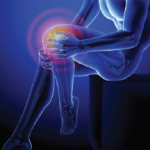“We’re still waiting for the radiographic data, which will allow us to look at the association between the MRI inflammatory joint scores and the X-rays that were obtained,” Dr. Ranganath says.
The investigators also plan to study whether there are any differences between the inflammatory joint scores based on the treatment the patient received during the TEAR trial. Going forward, they will review the data to determine the relationship, if any, between the inflammatory joint scores and the duration of sustained clinical remission before the MRI.
Reference
Help Find a Cure for RA
To make a pledge or one-time donation to the REF for the Within Our Reach: Finding a Cure for Rheumatoid Arthritis campaign, visit www.rheumatology.org/REF. For more information about the Within Our Reach campaign and to read about grant projects, visit www.WithinOurReach.info.


